Dynamic Scene Occlusion Culling using Regular Grids
Approach
Publications
Source code
Snapshots
Acknowledgements
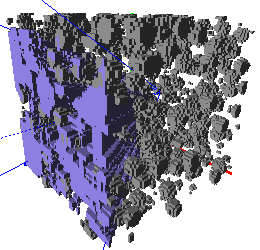
|
Harlen
Costa Batagelo
Wu, Shin - Ting (advisor)
Department of Computer Engineering and Industrial Automation
(DCA)
School of Electrical and Computer Engineering (FEEC)
State University of Campinas (UNICAMP)
This is an on-going project about the
development of a
conservative occlusion culling algorithm for densely occluded dynamic
scenes. Our approach concentrates on
using a regular grid as spatial database of the scene in order to decrease
the overhead due to maintaining dynamic objects in this data structure.
Left: snapshot of the 3D grid for a scene with 5,544,000
polygons |
The problem of using visibility
culling techniques to accelerate the visualization of large and complex 3D
scenes has gained considerable attention of the CG community in the last
few
years. The relevance of this
subject has been mostly attributed to the tremendous growth of processing power
the CG community have
witnessed in the latest
generations of graphics hardware, as well as the advent of cutting-edge
technologies such as hardware shader programming. Now we
have the power to visualize
large scenes composed by several
millions of polygons with interactive
rates in ordinary
applications such as
computer games. In addition,
CG users and developers have virtually
the chance to display such
scenes in real-time with complex shaders,
thus improving rendering quality.
Visibility culling algorithms play a key
role to turn this latent
chance into reality, as these techniques
may discard the processing of significant portions of typical scenes as
trivially hidden, thus decreasing performance penalties.
We have concentrated this work
on using visibility culling to accelerate the visualization of dynamic scenes,
which are scenes composed by objects of arbitrary motion
and considered as potential
occluders. Our method operates on a regular grid that represents a volumetric
discretization of the space and uses the opaque and hidden regions of the scene
as occluders in object-space. The choice for regular grids in dynamic scenes was
based on the flexibility of these data structures in quickly updating dynamic
objects in comparison with hierarchical data structures, such as octrees and
kD-trees usually exploited in static environments. Unfortunately, by using a
regular grid we lose some benefits of hierarchical approaches, such as the
ability to cull-out large portions of the scene in high levels of the hierarchy
and the adaptive subdivision of the scene. To overcome these drawbacks we
introduce several optimizations in the stages of scene discretization,
view-frustum traversal and occlusion computation that strengthen the benefits of
using regular grids in dynamic scene occlusion culling algorithms. So far, we
have successfully implemented an output-sensitive algorithm for 2D and 3D scenes
of arbitrary motion. The test results showed that the regular grid is very
efficient in maintaining hidden dynamic objects, but the tightness of
approximation of the PVS to the exact set is
still unsatisfactory.
While better results can be obtained by increasing grid resolution, the
efficiency decreases due to the high number of additional voxels that need to be
traversed. We believe that this
weakness is due to our choice of using occlusion fusion in object-space only. We
are currently working to exploit image-space occlusion fusion and to develop a
scheme of recursive regular grids in order to discard large portions of the
scene without traversing a great number of voxels.
Papers, demonstrations and source code of the
current implementation are given below:
Dynamic Scene Visibility Culling using a Regular Grid (PDF)
- Submitted to Computer Graphics Forum (Nov/2002)
Dynamic Scene Occlusion Culling using a Regular Grid (PDF)
- Published in SIBGRAPI 2002 (Oct/2002)
Visibilidade em Cenas Dināmicas com base numa Grade Regular (PDF
- portuguese only) - Master thesis (Sep/2002)
2D
Dynamic Scene Occlusion Culling using a Regular Grid (PDF)
-
Technical report (Dec/2001):
| Demonstrations
and source code |
2D case executable
(Windows,
OpenGL version)
2D case source code (VC++
6.0)
3D case
executable
(Windows,
OpenGL version)
3D case source code (VC++
6.0)
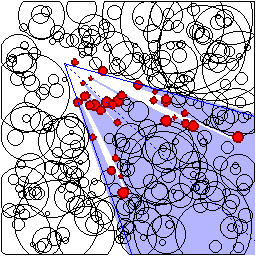 |
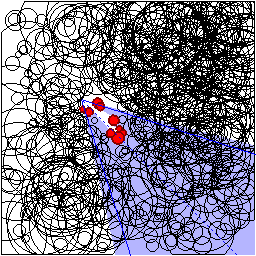 |
|
2D grid
300 dynamic objects (32 potentially visible)
Resolution: 256x256x256 cells
|
2D grid
600 dynamic objects (9 potentially visible)
Resolution: 256x256x256 cells |
|
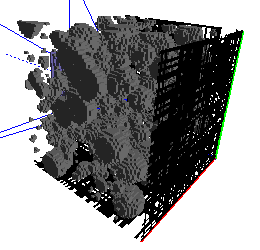
|
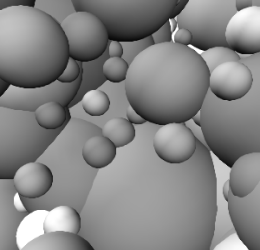
|
|
3D grid
4800 static objects + 200 dynamic objects
70x70x70 cells |
Rendered scene from the viewpoint
220 potentially visible objects
50 actually rendered |
This work was partially supported by Council for Improvement
of Higher Education Personnel (CAPES),
Brazil.




